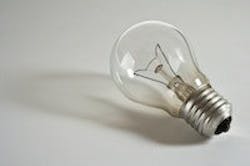Survey Identifies Obstacles, Opportunities to Advance Innovation in Water Sector
Deb LaVelle, chairman of the Water and Wastewater Equipment Manufacturers Assn. (WWEMA), presented findings from a survey of the association’s members on barriers to innovation and opportunities for fostering innovation at a March 4 roundtable discussion on “Innovating for Water’s Future,” sponsored by WWEMA and the U.S. Water Alliance. In attendance at this event were more than 60 representatives from the U.S. Environmental Protection Agency, states, utilities, consultants and manufacturers, among other sectors within the water and wastewater industry.
Among the top five barriers to innovation, according to the survey, are: the risk averse nature of the industry; the low economic value placed on water; “or equal” bidding requirements that give preference to low cost vs. lowest cost of ownership; complicated state permitting requirements; and Buy American restrictions.
“While the first four barriers identified in the survey have been traditionally associated with our industry, the Buy American restrictions that came with the stimulus program and continue to appear in legislative proposals have wreaked havoc on our marketplace in recent years,” LaVelle said. “These measures limit access to U.S. technologies using global supply chains and lock U.S. manufacturers out of foreign markets as other nations replicate U.S. policy governing local content rules.”
Among the top five recommendations coming from the survey on ways to stimulate innovation, stated LaVelle, were: utilizing lowest cost of ownership in the selection of technologies; providing federal or state variances for projects using innovative technologies; establishing a federal guarantee program for technology replacement; using “value based” vs. “or equal” procurement procedures; and employing full-cost pricing of water.
“Until municipalities charge the true cost of water, they will not have the capital reserves needed to make long-term investments in our nation’s water and wastewater infrastructure or adopt the technologies that can offer the greatest return on their investments,” said LaVelle.
Equally telling in the survey were the options least preferred by the respondents as ways to spur innovation, including the need for additional skill-based education and accreditation programs; greater federal investment in research and development; and establishment of regional centers for technology development.
Source: Water and Wastewater Equipment Manufacturers Assn.
